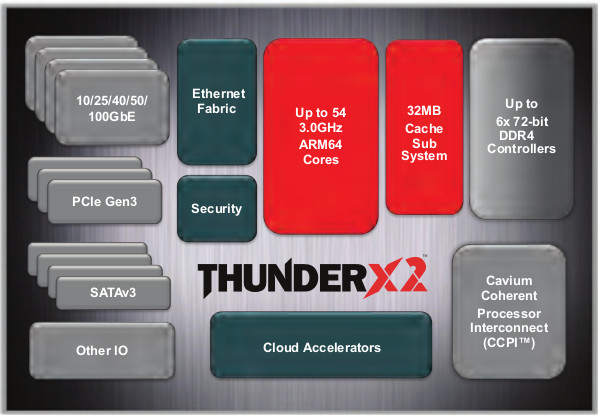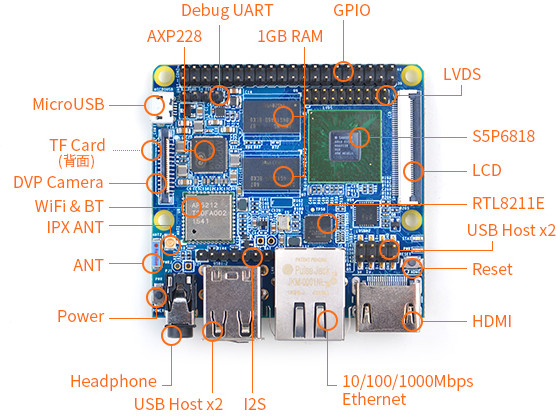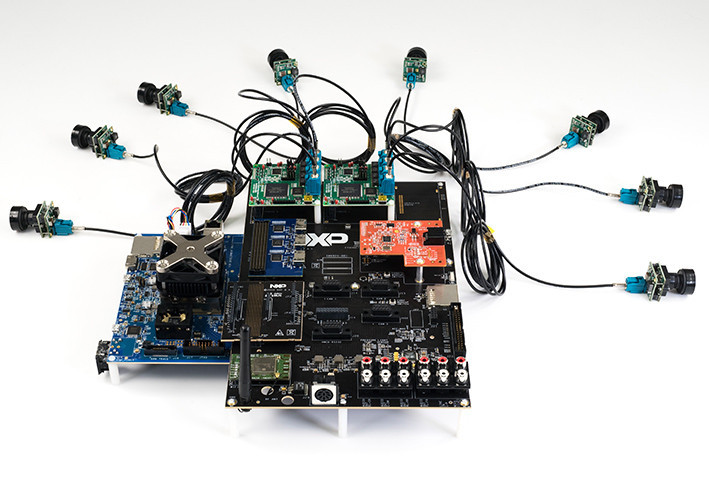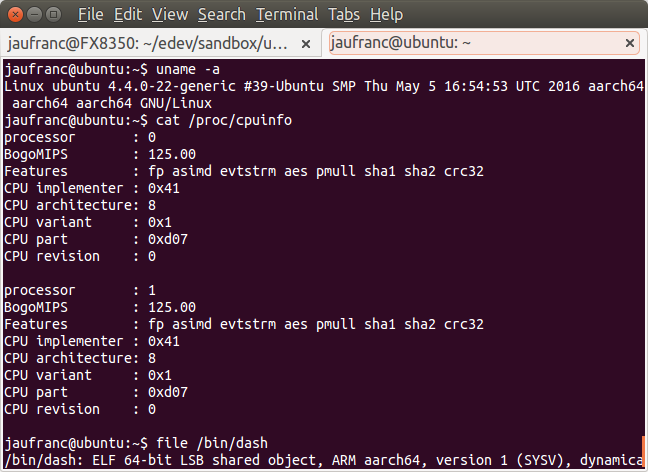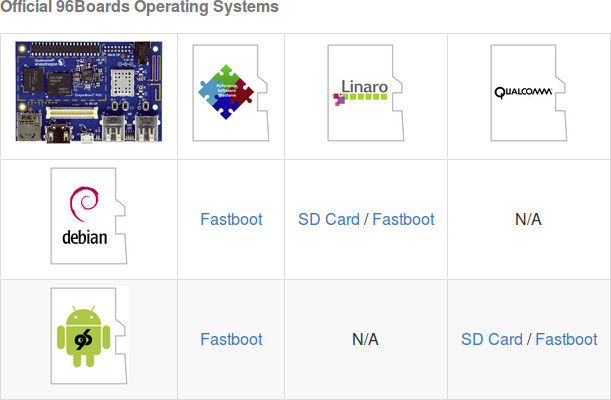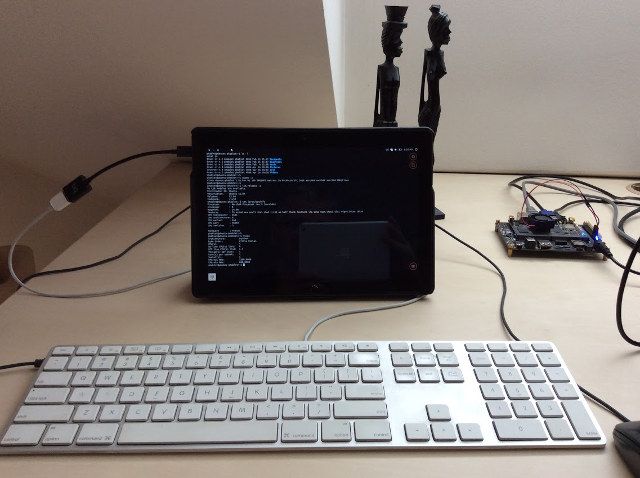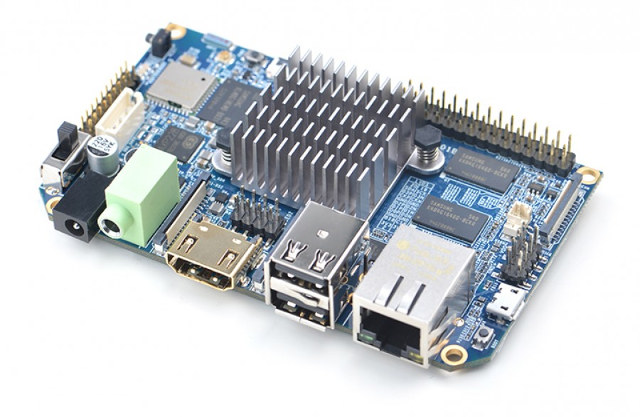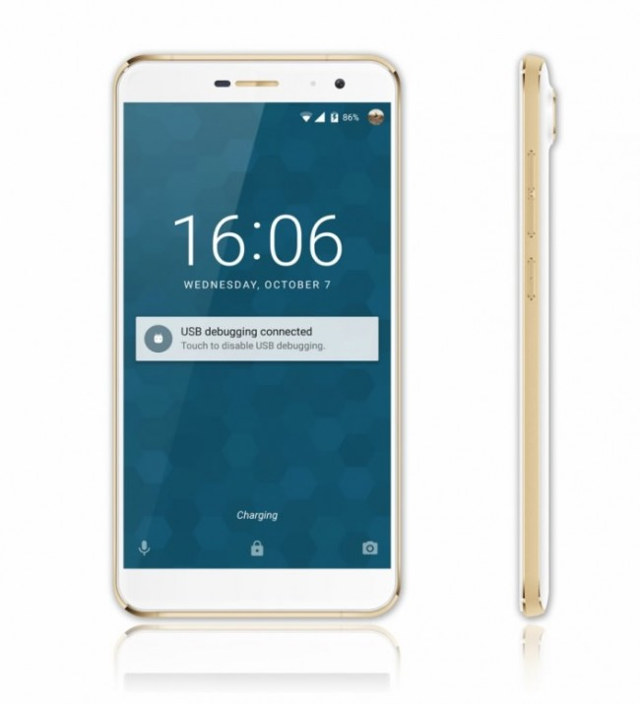Cavium announced their first 64-bit ARM Server SoCs with the 48-core ThunderX at Computex 2014. Two years later, the company has now introduced the second generation, aptly named ThunderX2, with 54 64-bit ARM cores @ up to 3.0 GHz and promising two to three times more performance than the previous generation. Key features of the new server processor include: 2nd generation of full custom Cavium ARM core; Multi-Issue, Fully OOO; 2.4 to 2.8 GHz in normal mode, Up to 3 GHz in Turbo mode. Up to 54 cores per socket delivering > 2-3X socket level performance compared to ThunderX Cache – 64K I-Cache and 40K D-Cache, highly associative; 32MB shared Last Level Cache (LLC). Single and dual socket configuration support using 2nd generation of Cavium Coherent Interconnect with > 2.5X coherent bandwidth compared to ThunderX System Memory 6x DDR4 memory controllers per socket supporting up to 3 TB RAM in […]
$35 NanoPi M3 Octa Core 64-bit ARM Development Board is Powered by Samsung S5P6818 Processor
A few weeks after introducing NanoPC-T3 single board computer based on Samsung S5P6818 octa-core Cortex A53 processor, FriendlyARM is now launching a cost-down version called NanoPi M3 for just $35 with 1GB RAM, and booting from a micro SD card. NanoPi M3 board specifications: SoC – Samsung S5P6818 octa core Cortex A53 processor @ up to 1.4GHz with Mali-400MP GPU System Memory – 1 GB 32-bit DDR3 Storage – 1x micro SD card slot Connectivity – Gigabit Ethernet (RTL8211E), 802.11 b/g/n WiFi and Bluetooth LE 4.0 (Ampak AP6212) with on-board chip antenna and IPX antenna connector Video Output / Display I/F – HDMI 1.4a up to 1080p60, LVDS, parallel RGB LCD Audio I/O – HDMI, 3.5mm audio jack, 7-pin I2S header Camera – 1x DVP interface USB – 2x USB 2.0 type A host ports; 1x micro USB 2.0 client port; 2x USB 2.0 host ports via 8-pin header Expansions […]
NXP Unveils i.MX 8 Multisensory Enablement Kit with Hexa Core ARMv8 Processor
Freescale, now NXP, i.MX 8 processors have been a long time coming, but finally the company has now unveiled a Multisensory Enablement Kit based on i.MX 8 hexa core ARMv8 processor combined with a Vulkan-ready & OpenCL capable GPU. Key features of the development kit: Multisensory Processor Board Multisensory Expansion Board Isolation and separation of secure, safe and open domains Rich compute (6x ARMv8 64-bit main CPUs, OpenCL GPU) Vulkan-ready GPU with HW tessellation and geometry shading Efficient, multi-screen (4x) support via HW virtualization Failover-ready display path Up to 8x camera input for 360 degree vision Integrated vision processing HDR enhanced video Multi-sensor fusion and expansion Multi-core audio and speech processing NXP radio solution integration However, at the time of writing, there’s very little information about i.MX8 processors themselves, but I’m confident much more info should soon surface as NXP FTF 2016 is taking place now until May 19, 2016. […]
How to Run Ubuntu 16.04 Aarch64 (64-bit ARM) Cloud Images on Your Intel/AMD Linux Computer with QEMU
With the recent launch of several low cost Cortex A53 development boards, 64-bit ARM hardware is now pretty common and inexpensive, but if you want to run 64-bit ARM code on your x86 Linux computer, Riku Voipio, a software engineer working for Linaro, wrote some instructions to run Ubuntu 16.04 Aarch64 Cloud image in QEMU. Ubuntu cloud images are “the official Ubuntu images and are pre-installed disk images that have been customized by Ubuntu engineering to run on public clouds that provide Ubuntu Certified Images, Openstack, LXD, and more. ” So the instructions are also useful if you want to easily try such packages on 64-bit ARM platform. I’ve tried those instructions myself on my Ubuntu 14.04 machine with and AMD FX8350 processor, and they worked pretty well, and the only things I had to find out by myself was to install a recent version of qemu. First, we’ll need […]
Debian on DragonBoard 410c Development Board
I purchased Qualcomm DragonBoard 410c development board last year, and first tested it and run some benchmark on the 96Boards compliant hardware with Android. I found that it was still work-in-progress, and decided to wait before trying Debian on the board. I’ve now done so, and will report by experience installing Debian Linux, playing with the board, and running Phoronix benchmarks to compare it to other ARM Linux boards. Installing Debian on DragonBoard 410c The first challenge is to navigate through the documentation that is not always clear or up-to-date. I eventually ended up on DragonBoard 410c Wiki on Github. You then have to decided which image you want. While there are two official operating systems with Android and Debian, you can three “entities” releasiong their own images. For Debian specifically, you have the Linaro image, and Reference Platform Build (RPB) image. I could not find any changelog or known […]
Setup Guide & Mini Review of BQ Aquaris M10 Ubuntu Edition Tablet from a Developer’s Perspective
BQ Aquaris M10 UBuntu Edition is the first officially supported Ubuntu tablet on the market. Blu, a frequent commenter on this blog, has purchased the Full HD version, and in the guest post below, shares his experience setting up the device for development purpose, before shortly providing his overall impressions about the tablet itself. Quick introduction Ever since I had to retire my trusty-but-ancient ARM notebook (a Genesi Efika iMX51) I’ve been looking for a new ARM notebook or perhaps a 2-in-1 device, that I could use for development on the go. The basic requirements are long battery life, passive cooling and reasonable price. Also, Just Enough Power™ for running vim, a couple of toolchains (gcc/clang with gold) and, well, enough grunt to run my coding experiments. Naturally, BQ M10 Ubuntu Edition immediately got my attention to the extent of me placing an order, which got delivered this past week. […]
NanoPC-T3 Octa-core Cortex A53 Single Board Computer Sells for $60
FriendlyARM launched NanoPC-T2 single board computer based on Samsung 5P4418 quad core Cortex A9 processor about 3 months ago, and the company has now an update based on Samsung S5P6818 Octa-Core A53 processor with the exact same interfaces and features including Gigabit Ethernet, WiFI, and Bluetooth, HDMI 1.4a, 30-pin expansion headers, etc… NanoPC-T3 specifications: SoC – Samsung S5P6818 octa core Cortex A53 processor @ up to 1.4GHz with Mali-400MP GPU System Memory – 1 or 2GB 32bit DDR3 RAM Storage – 8GB eMMC flash, and 1x SD card slot Connectivity – Gigabit Ethernet (RTL8211E), 802.11 b/g/n WiFi and Bluetooth LE 4.0 (Ampak AP6212) with on-board chip antenna and IPX antenna connector Video Output / Display I/F- 1x HDMI 1.4a, LVDS, MIPI DSI, parallel RGB LCD Audio I/O – HDMI, 3.5mm audio jack, on-board microphone Camera – 1x DVP interface, 1x MIPI CSI interface USB – 2x USB 2.0 type A host […]
ARM Cortex A72 is Getting into Sub $200 Android Smartphones Thanks to Mediatek Helio X20 SoC
Flagship Android smartphones now ship with processors featuring Cortex A72 cores, or custom variants from Samsung or Qualcomm, and normally cost several hundred dollars. Some new smartphones recently announced with MediaTek Helio X20 deca-core processor lower the price barrier in the $250 to $400 range, but at least two upcoming models will bring the cost below $200: Doogee P7 ($169.99), and Vernee Apollo Lite ($199.99). So let’s see what we’ve got for those prices. Doogee P7 Doogee P7 (preliminary) Specifications: SoC – Mediatek Helio X20 (MT6797) deca-core processor with 2x Cortex A72 cores @ 2.5 GHz, 4x Cortex A53 cores @ 2.0 GHz, and 4x Cortex A53 cores @ 1.4 GHz and ARM Mali-T880MP GPU @ 850 Mhz System Memory – 3GB RAM Storage – 16 GB storage and micro SD slot up to 64GB (shared with dual SIM slot) Display – 5.5″ capacitive touchscreen, 1920×1080 resolution; 160K colors Cellular […]


